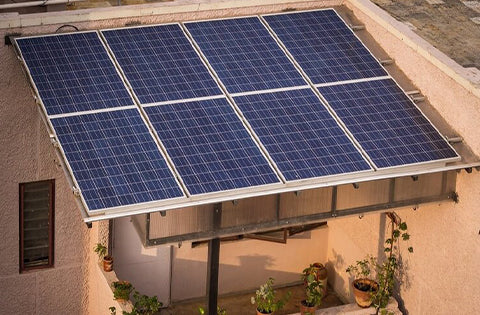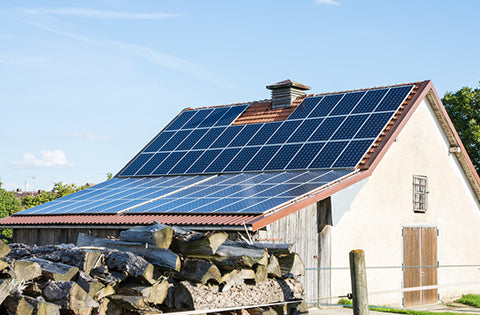Vehicles have gone through many new upgrades in the last decade. Everything from backup cameras to smart technology and running on electricity instead of gas has shaped the modern driving experience. While driving has changed for the future, so has the way motorists fill their tanks or charge their vehicles. Find out more about charging stations and the best choice in our comparison guide on charging an electric vehicle at home versus public charging stations.
The Pros and Cons of At-Home Charging
New technology has its fair share of benefits and drawbacks. As you learn about at-home charging and public charging capabilities, discover for yourself the pros and cons of using an at-home charging power wall.
The Pros
Using an at-home charger prevents damage to your car that you might get at public stations, resulting in fewer repairs. Also, as a homeowner, you’re aware of everything around the house, especially the charging station usage. You know how frequently you or someone else uses it.
Using an at-home charging station will save you time. You won’t need to drive long distances to find a charging station, and you won’t need to wait on others to finish charging. Charging at home might also save you money on fees.
The Cons
On the other hand, there are reasons you may not want an at-home charging port. Many buildings, like homes, aren’t equipped with the suitable building materials to support charging stations. Older homes need to undergo substantial home renovations to be able to host a charging station.
In addition to the costs of home renovations, the upfront installation costs are high. Depending on where you install it, your choices are limited to a designated parking spot in the driveway or garage. Although you’ll enjoy the luxury of having an electric car charging station at home, you might not see a quick return on your investment.
Pros and Cons of Public Charging
Public charging stations are the preferable option for those who travel in and out of nearby cities. Towns, businesses, and drivers benefit significantly from public charging stations, but there are drawbacks to consider.
The Pros
It is great to have public access to charging stations since they’re conveniently located along the route to work each day. The best thing about public electric vehicle stations is that people and businesses benefit from tax breaks.
Many electric car drivers qualify for a green tax credit that returns close to 30 percent for installation and charger hardware costs. These benefits are fantastic and allow towns and businesses to expand their charging point network.
The Cons
There are downsides to public charging ports. For instance, you will likely have a long wait to use the charging port, even in a gas station with multiple chargers. A fast charging station takes about 30 minutes to charge your battery to 80 percent, compared to sitting at home waiting 16 plus hours for a full charge.
Aside from that, if you don’t know a town well enough to know where everything is, you may find it challenging to find a charging station. Depending on the area, charging stations may not be available, especially if you’re in an area that doesn’t have many electric car drivers.
Finally, public charging ports use Level 3 charging systems for electric cars. Level 3 stations charge the battery faster, but they also cause your battery to run out faster. Instead of relying on a portable charging station, consider mounting one at home.
Where Should You Charge Your Car?
You should always strive to charge your car at home rather than at a public charging station. It’s better to charge your car at home to save money and decrease the wear and tear of your car’s battery. The best places to install your car’s charging port are the places you park most.
Say you park in the driveway more often; then you’d want to install the port to a wall close by so it’s easy to plug in when you exit your vehicle. You don’t want to ruin your landscaping by driving to a far wall, and longer charging cables can be expensive. You should charge your electric car in an area that’s accessible.
What Are the Charging Levels?
Every at-home and public car charging port has different levels of power. Level 1 is best for home usage but can be found in public and workplace areas. It could take about 16 to 20 hours to fully charge a vehicle at Level 1.
Level 2 takes between three to eight hours to charge fully. Again, you’ll find this one at public stops, and it is preferred in home or work environments. Level 3 stations only take about 30 minutes to fully charge the battery. This option is commonly found at public charging stations.
Where and How You Charge Your Vehicle Matters
It’s essential to find a spot for your charging station. It’s crucial to pick an accessible place close enough to your charger so you won’t need to travel too far to get to a port. Ideally, charging at home is better because you’ll save time and money.
How you charge your car also matters. Different chargers work with different power types. The most popular is solar-powered. While your car saves energy and protects the environment, so can your car’s power bank.
When driving an electric car like a Tesla, you may be unsure what is the best charging solution. Solar power is the best option for charging Teslas and many other electric vehicles. Solar panels use the sun to generate energy, allowing the car to charge with sunlight so you can continue driving.



